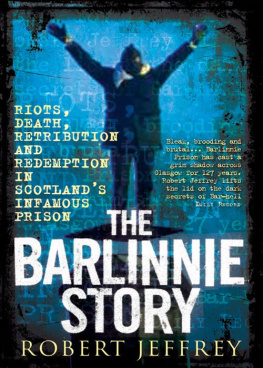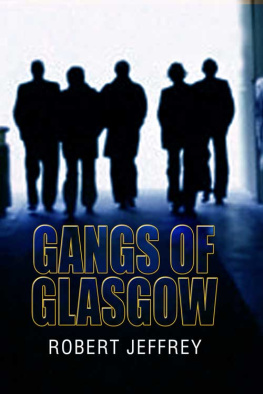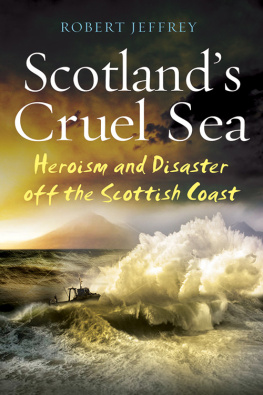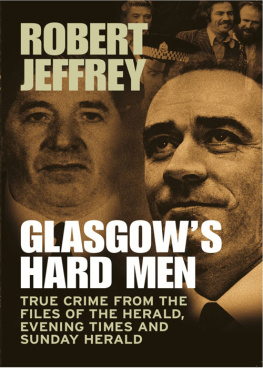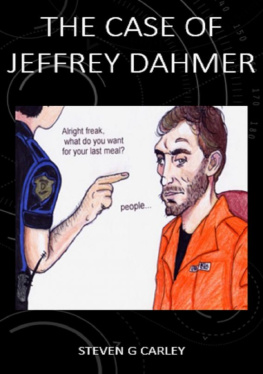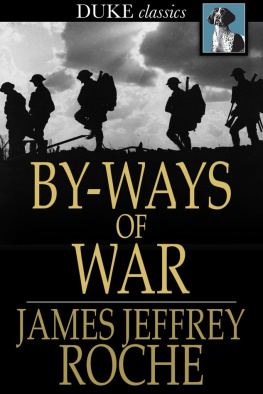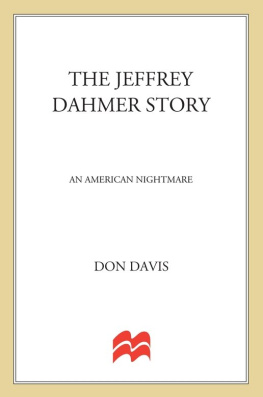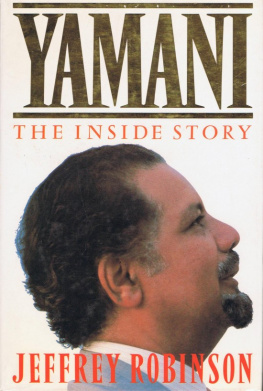Robert Jeffrey - The Barlinnie Story
Here you can read online Robert Jeffrey - The Barlinnie Story full text of the book (entire story) in english for free. Download pdf and epub, get meaning, cover and reviews about this ebook. year: 2011, publisher: Black & White Publishing, genre: Science fiction. Description of the work, (preface) as well as reviews are available. Best literature library LitArk.com created for fans of good reading and offers a wide selection of genres:
Romance novel
Science fiction
Adventure
Detective
Science
History
Home and family
Prose
Art
Politics
Computer
Non-fiction
Religion
Business
Children
Humor
Choose a favorite category and find really read worthwhile books. Enjoy immersion in the world of imagination, feel the emotions of the characters or learn something new for yourself, make an fascinating discovery.
- Book:The Barlinnie Story
- Author:
- Publisher:Black & White Publishing
- Genre:
- Year:2011
- Rating:3 / 5
- Favourites:Add to favourites
- Your mark:
- 60
- 1
- 2
- 3
- 4
- 5
The Barlinnie Story: summary, description and annotation
We offer to read an annotation, description, summary or preface (depends on what the author of the book "The Barlinnie Story" wrote himself). If you haven't found the necessary information about the book — write in the comments, we will try to find it.
The Barlinnie Story — read online for free the complete book (whole text) full work
Below is the text of the book, divided by pages. System saving the place of the last page read, allows you to conveniently read the book "The Barlinnie Story" online for free, without having to search again every time where you left off. Put a bookmark, and you can go to the page where you finished reading at any time.
Font size:
Interval:
Bookmark:
Also by Robert Jeffrey
Gentle Johnny Ramensky
A Boxing Dynasty (with Tommy Gilmour)
Real Hard Cases (with Les Brown)
Crimes Past
Glasgow Crimefighter (with Les Brown)
Glasgows Godfather
Gangs of Glasgow (first published as Gangland Glasgow )
Glasgows Hard Men
Blood on the Streets
The Wee Book of Glasgow
The Wee Book of the Clyde
*
Clydeside People and Places
The Herald Book of the Clyde
Doon the Watter
Images of Glasgow
Scotlands Sporting Heroes (with Ian Watson)
CONTENTS
I would like to thank the friendly and efficient staff of the Glasgow Room in the Mitchell Library for their help in the production of this book. Also Bill McKinlay, former Governor of Barlinnie, his secretary Jane OBrien, current Governor Derek McGill, Ron Ferguson, Dr Grant Jeffrey and a legion of lawyers, lawbreakers, prison officers and policemen.
RJ
Carradale, Argyll
To the men and women of the Scottish Prison Service
Iconic. That is the word for Barlinnie, Scotlands largest jail, aka the Bar-L. The former Governor, Bill McKinlay, jocularly reckons that worldwide the name is better known than Edinburgh Castle. Though let there be no doubt that Barlinnie is no tourist attraction despite the huge numbers of repeat visitors. This massive sandstone edifice, in the east end of Glasgow, was opened in 1882 and the newspapers of the time remarked on the light colour of the stone it was built from, which was said to shine in the summer sun.
Over the years the stone has turned to a grimy black and the sunshine of hope that saw the massive building project as a solution to overcrowding in Glasgows Victorian prisons has withered. Barlinnie has been, almost from the moment it opened, overcrowded. It is still in 2011 clearly, in the phrase of the day, not fit for purpose. In particular because that purpose is much more than incarceration. We are not here, said Bill McKinlay, just to take peoples freedom away. Were here to be facilitators and to allow people to change. Those, that is, who have the will to change.
Bill McKinlay is a vastly experienced member of the prison service. Everything he knows from his long service in all sorts of jails and in many different roles underlines his belief that HMP Barlinnie should be blitzed by the wreckers ball and a new start made in Glasgow in a new prison. He is not the first to think that way and he is not alone. He acknowledges that there are those who argue that these sandstone monoliths must still be useful if for no other reason than they are still standing. Well, so are the pyramids. But no one has been buried inside them for some time, former Governor McKinlay points out wryly.
In the ongoing Barlinnie story thousands have been buried, and are continuing to be buried, in the great, echoing halls. Cast out from society, sentenced to pay for their crimes in one of the toughest, most infamous prisons in the world. Alcatraz, the Bangkok Hilton, Folsom, Strangeways, Pentridge, the Scrubs Barlinnie has an infamous place high in the list of the worlds most fearsome jails. And still, day after day, the buses now owned by a private company ferry the guilty from some of the busiest courts in the world through the crowded streets of Glasgow to begin their time. But its no consolation to those who are in a living hell that they are part of the ongoing history of one of the worlds iconic prisons.
That history is a strange mixture of villainy, humanity, tragedy, drama and hope. The hope is that the future for this grim place, and those incarcerated in it, will improve. That somehow the hope of the Victorians who built it will turn to reality, the hope that redemption will finally triumph over revenge. There is, however, no great grounds for optimism since for most of its 120 or so years of life Barlinnie has been a permanently overcrowded and, until as recently as 2002 when slopping out ended, an unsanitary repository for thousands of lawbreakers. If hope is a contentious issue, the drama surrounding Barlinnie is undeniable. Down the years the prison has sparked thousands of headlines. Drama and danger go with the job, as those in the prison service who are charged by society to look after the villains know only too well.
This Barlinnie Story is not a formal or indeed a chronological history of the prison it is an unofficial, perhaps sometimes idiosyncratic, attempt to chronicle some of the momentous events in the long turbulent life of an establishment that is infamous worldwide. And an attempt to let ordinary Glaswegians, who have never darkened the doors of any prison and are never likely to, get a taste of what life was like down the years for prison officers who fostered their careers in the Big Hoose in the east end, as well as for the men who festered there, sometimes taking the short walk from the condemned cell to the gallows.
There is no shortage of drama escapes, hangings, unrest, political prisoners, a groundbreaking and visionary experiment in prison reform, humanity and brutality. All these are part of the story and the history of Barlinnie.
The happenings in the east end of Glasgow one week in January 1987 were as spectacular as anything seen in the jail since it opened its doors to the citys villains in the 1880s. Many insiders, and those who had read the Prison Inspectorates reports with diligence, were not surprised at the violent outbreak of disorder. They had seen it coming. But one of the officers who was on the front line in the chaotic battle to secure the prison told me that he and his colleagues were not ready for the scale of what happened. In fact most of those who had read the warning signs were taken aback by the enormity of the 87 riot the longest lasting siege in the history of Scottish prisons.
When the pressure pot that was Barlinnie finally blew its top, the confrontation between prisoners and staff was violent, dangerous and potentially deadly. The newspapers broke the story on the morning of Tuesday, 6 January 1987, though anyone in the vicinity of the prison on the Monday could have seen the drama first hand as cons on the roof threw slates at the prison officers. Even concrete blocks prised from the floors were dropped on officers in riot gear by prisoners who had wrecked large areas of the jail and smashed their way into the pharmacy in search of drugs.
Inevitably the early reports were confused as to exactly when the riot started and what was really going on behind those high, thick walls of age-blackened sandstone. For five dark, cold midwinter days the story unfolded in a hotchpotch of lurid headlines, speculation, leader articles, features and spectacular pictures. It was big news worldwide. The press and television had a field day this was a prison riot on their doorsteps, as spectacular as anything Hollywood could dream up, a potential life and death struggle between some of the hardest men in Scotland and their jailors.
It was a fairly hysterical few days as the press reported or sometime guessed at the twists and turns in the drama, day by day. Illustrative of the intensity of the media coverage was the fact that after a helicopter and film crew had flown over Barlinnie, the Scottish Office successfully applied to the Civil Aviation Authority for a ban on flights over the prison. They claimed the flights were interrupting negotiations. Aye, right, as they say in Glasgow. A more serious matter was the news the prisoners were getting from the radio on the progress of the riot and at one stage Radio Clyde and BBC Radio Scotland imposed a seven-hour news blackout as it was believed the airing of too much detail could hamper talks between the two warring sides, then at a delicate stage.
A measure of the press hysteria was the number of bylines on the stories coming out in the papers day after day during the siege. In the eighties it had become quite normal for such as the Daily Express and Daily Record to run major news stories with anything up to ten reporters bylined. On occasion they even used the phrase Record or Express team at the top of the story and at the end of the tale a list of those involved in compiling it was given. This was in the days when news desks still had bundles of money to throw at the coverage of a big story, the golden days before TV became king of news coverage. For the Barlinnie riot even the douce old Herald (then the Glasgow Herald ) had a double byline on the first reports from the prison, the reporters, long time stalwarts Auslan Cramb and Maurice Smith, both major players in Herald history. But later in the week the broadsheets, even the broadsheet Herald , succumbed to the multiple byline as the story grew ever important. Other legendary Herald men like Barclay McBain, John Easton, Bill McDowall and Andy McCallum were soon enjoying their bylines at the top of the dozens of stories in the paper each day featuring the riot. This was the BIG story.
Next pageFont size:
Interval:
Bookmark:
Similar books «The Barlinnie Story»
Look at similar books to The Barlinnie Story. We have selected literature similar in name and meaning in the hope of providing readers with more options to find new, interesting, not yet read works.
Discussion, reviews of the book The Barlinnie Story and just readers' own opinions. Leave your comments, write what you think about the work, its meaning or the main characters. Specify what exactly you liked and what you didn't like, and why you think so.

